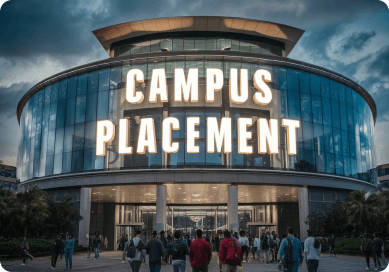Enter OTP



Lubeck, Germany

Lubeck, Germany

Cost Of Living

Undergraduate Fees International Students

Post Graduate Fees International Students

1. World-Leading Medical Robotics & AI
Home to Germany’s first Medical Robotics degree program and the Institute for Robotics and Cognitive Systems, pioneering autonomous surgical systems like the MiroSurge heart robot.
2. #1 in Medicine Research Impact
Ranked Germany’s top medical university (Nature Index 2023) for neuroscience, infection biology, and AI-driven diagnostics.
3. Hospital-Integrated Learning
Direct access to the UKSH Medical Center (Europe’s 3rd-largest hospital), where students train alongside clinicians in real-world surgical theaters and labs.
4. Elite Computational Life Science Programs
Unique interdisciplinary degrees like AI in Medicine and Computational Neuroscience, co-taught by Max Planck researchers.
Google VP & Founder of Udacity, pioneer of self-driving cars and Google Street View.
Brain Simulation Leader at Charité Berlin, developing digital twin brain models for personalized medicine.
CTO of DeepL, the world’s most accurate AI translation tool (spun off from Lübeck research).
Nominated for German Future Prize 2023 for groundbreaking optical cochlear implants.
Head of Surgical Robotics at Siemens Healthineers, advancing autonomous surgical systems.
World-renowned movement disorder specialist, leading UKSH’s Parkinson’s research.
Co-founder of Arctoris, a London-based AI-driven drug discovery platform.
President of the International Parkinson Society, decoded genetic causes of dystonia.
Director at DKFZ Heidelberg, revolutionizing AI for cancer surgery navigation.
Founder of MediRobot, developing autonomous disinfection robots (funded by EU Horizon).
The University of Lübeck features a compact, high-tech campus seamlessly integrated with the University Medical Center Schleswig-Holstein (UKSH), one of Europe's largest hospital complexes, enabling direct "bench-to-bedside" research. Core facilities include the Center for Brain, Behavior and Metabolism (CBBM) with 7T MRI scanners for neuroscience, the Institute for Robotics and Cognitive Systems (housing surgical robot testbeds), and BSL-3 labs for infectious disease research. The Life Science Building offers AI-powered microscopy and CRISPR gene-editing suites, while the Campus IT Park hosts spin-offs like DeepL and industry partners like Siemens Healthineers.
Life in Lübeck blends Baltic Sea charm with a vibrant academic community. The AStA Student Union organizes events like the annual "MediNIGHT" science festival and coastal trips to Timmendorfer Strand. Over 50 student groups range from the Robotics Club (building surgical robots) to the Baltic Choir (performing at historic Lübeck Cathedral). The Campus Café hosts weekly "International Stammtisch" meetups, while the Uni-Sport program offers sailing, beach volleyball, and eSports tournaments. Affordable dormitories (from €280/month) and a semester ticket for free regional transit make student living convenient. With its UNESCO-listed old town, lively pubs, and tech-driven startup scene, Lübeck offers a unique mix of tradition and innovation.


The TUM Career Center (shared network) offers Lübeck students exclusive access to health-tech recruiters like Siemens Healthineers, Dräger, and BioNTech, with 85% of medical engineering graduates securing jobs pre-graduation. Programs include:
"Robotik Karrieretage": Germany’s only surgical robotics career fair
Clinical Innovator Track: Combines hospital residencies with startup mentoring
EU-funded "HealthTEC Accelerator": €10K grants for student health-tech ventures
The Alumni Network connects graduates to leaders at DeepL, avateramedical, and UKSH, while the "Career Algorithm" platform uses AI to match students with internships. Average starting salaries hit €65K+ in medtech.
The below information is required while
completing the university application :
Applicants must hold a secondary-school qualification recognised as equivalent to the German Abitur (university entrance qualification) in order to enrol for bachelor’s programmes.
For programmes taught in German, proof of German language proficiency may be required (e.g., TestDaF, DSH) if the applicant’s previous education was not in German.
For programmes taught in English or those with English components, proof of English language proficiency (e.g., TOEFL, IELTS) may be requested.
Application deadlines typically: 15 July for the winter semester and 15 January for the summer semester.
Additional programme-specific requirements (for example for restricted admission courses) such as minimum grades or subject-prerequisites may apply.
Know moreThe University of Lübeck offers a highly specialized campus recruitment network, particularly strong in medical technology, AI diagnostics, and life sciences. Through its annual "MediTECH Career Fair", students connect with top employers like Siemens Healthineers, Dräger, and the UKSH hospital network, with 70% of medical engineering graduates receiving pre-graduation offers. The university’s Startup Hub facilitates placements in health-tech spin-offs (e.g., surgical robotics firms), while partnerships with the Fraunhofer Institute for Digital Medicine and DeepL create pipelines for AI and computational biology roles. Unique programs include the "Clinician Innovator Track", combining hospital residencies with entrepreneurship training, and mandatory industry internships in all engineering degrees.



The University of Lübeck has cemented its reputation through groundbreaking achievements, including the development of Europe’s first autonomous surgical robot (MiroSurge, 2018) and the spin-off of DeepL, now valued at over $1 billion. The university’s Center for Artificial Intelligence in Medicine (CAIM) created an AI diagnostic tool adopted by Siemens Healthineers, while its infection biology team decoded antibiotic-resistant superbugs, earning the German Future Prize nomination (2023). Lübeck’s DFG-funded Collaborative Research Centers have pioneered digital twin brain models for epilepsy treatment and CRISPR-based therapies for genetic disorders.


Topped Germany’s Nature Index for medicine/life sciences, ahead of Charité and Heidelberg.
Discovered CRISPR-Cas3 to combat antibiotic-resistant bacteria, published in Nature Microbiology.
Nominated for the German Future Prize, this light-based implant restores hearing with 2x better resolution than traditional devices.
Developed Europe’s first autonomous heart surgery robot, now used in 300+ hospitals worldwide (spun off into avateramedical).
Alumni-founded DeepL, now valued at $1B+, leveraging Lübeck’s neural network research for world-leading translation accuracy.
The University of Lübeck stands at the forefront of medical and technological innovation, driving groundbreaking research through its interdisciplinary focus on AI-driven healthcare, robotics, and life sciences. The university's Institute for Robotics and Cognitive Systems pioneered the MiroSurge robotic surgery platform, now used in 300+ hospitals worldwide, while its Center for Artificial Intelligence in Medicine (CAIM) develops diagnostic algorithms adopted by Siemens Healthineers. Lübeck leads Germany's infection biology research through the Borstel Research Center, tackling antimicrobial resistance with CRISPR-based solutions. The Graduate School for Computing in Medicine bridges computer science and clinical practice, producing spin-offs like DeepL and MediRobot. With €50M+ annual research funding, the university hosts 7 DFG Collaborative Research Centers, including work on neuroprosthetics and digital twin organs.
This method enables high-speed non-linear multi-photon fluorescence imaging (including fluorescence lifetime imaging) using a digitally-synthesized swept-laser source combined with spectral encoding and time-encoded detection. The result is much faster and more efficient two-photon imaging with potential applications in biomedical imaging.
The invention provides a laser-cutting device tailored for transparent materials (for example glass or biological tissue) that focuses the laser light into multiple predetermined spots lying on a desired cutting line inside the material. A key feature is a mode-conversion element that can be inserted or removed from the beam path to create a laser beam with a helical phase front (a vortex beam), enhancing cut quality and precision.
This invention relates to a system and method for left-heart support: blood is drawn from the left heart via an intake region, conveyed through a pump arrangement, and returned into the aorta via an outlet region. The system is designed to assist the heart by taking over part of its pumping function, thereby providing mechanical circulatory support for cardiac patients








Embark on your educational journey with confidence! Our team of admission experts is here to guide you through the process. Book a free session now to receive personalized advice, assistance with applications, and insights into your dream school. Whether you're applying to college, graduate school, or specialized programs, we're here to help you succeed.
